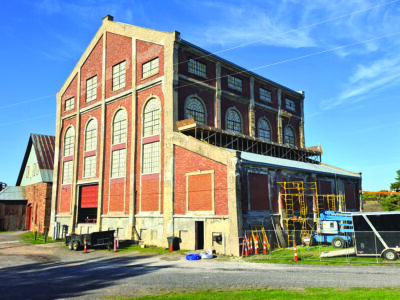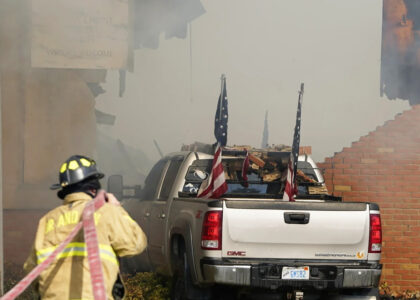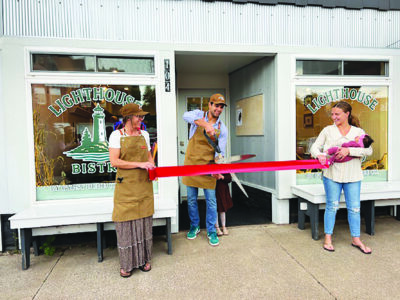Preservation continues at Quincy mine
Repair at number 2 shaft hoist house

Graham Jaehnig/Daily Mining Gazette The Quincy hoist house, which houses the largest steam-powered mine hoisting engine in the world, is receiving restorative work to its steel-reinforced concrete shell this summer.
FRANKLIN TOWNSHIP – The former Quincy Mining Company’s Number 2 Shaft hoist house is receiving much-needed repairs. The hoist house was constructed in 1918. The project includes removing broken and cracked concrete to expose, repair or replace old steel reinforcing rebar beneath it, before applying new concrete, said Tom Wright, executive director of the Quincy Mine Hoist Association.
Project funding comes from part of a $1.4 million grant received last August to continue restoration work at the No. 2 mine site. The grant is through the Abandoned Mine Lands program, which is through the U.S. Department of Interior,
The Abandoned Mine Land (AML) program addresses physical safety and environmental hazards associated with abandoned hard rock mines on Bureau of Land Management (BLM)-managed public lands, according to the Dept. of Interior. Abandoned mines are those abandoned prior to January 1, 1981, the effective date of BLM’s Surface Management regulations issued under authority of the Federal Land Policy and Management Act of 1976.
According to the Keweenaw National Historical Park’s 2024 Keweenaw Guide, in many parts of the concrete building, the embedded steel reinforcing bars were placed very near the surface and have been corroding over time. The rusting steel expands, which leads to the fracture and failure of the surrounding concrete, which breaks and falls away, exposing still more steel to weathering and accelerating overall degradation.
“It (the funding) continues the work we’ve already spent on the building,” Wright said. “We hope that it will get us close to 80% completion work in terms of restoration.”
Part of the same grant funded work done on the No. 2 shaft house last fall, which included constructing a new hatch in the roof, approved by the Historic Preservation Office (SHPO). The flagpole, original to the 1908 steel shaft house, was also removed last fall. Its new replacement will be equipped with an internal lanyard system that will allow for the flag to be raised and lowered safely inside the building from a railed platform beneath the hatch. Other work included stabilizing iron support columns and structural work beneath the roof at the base of the flagpole, which was anchored 10 feet below the roof ridge.
Issues like these at historic sites are what the AML program is intended to address.
“Essentially, if you can fall into it, or it can fall on you,,” Wright said, “it kind of falls under the rubric for that program,.”
The Quincy Mine Hoist Association is a dedicated 501(c)(3) nonprofit organization, the primary focus of which lies in preserving and interpreting the history, landscapes, buildings and industrial work experiences associated with the Quincy Mining Company. The Quincy Mining Company operated on the site from 1848 to 1945.





